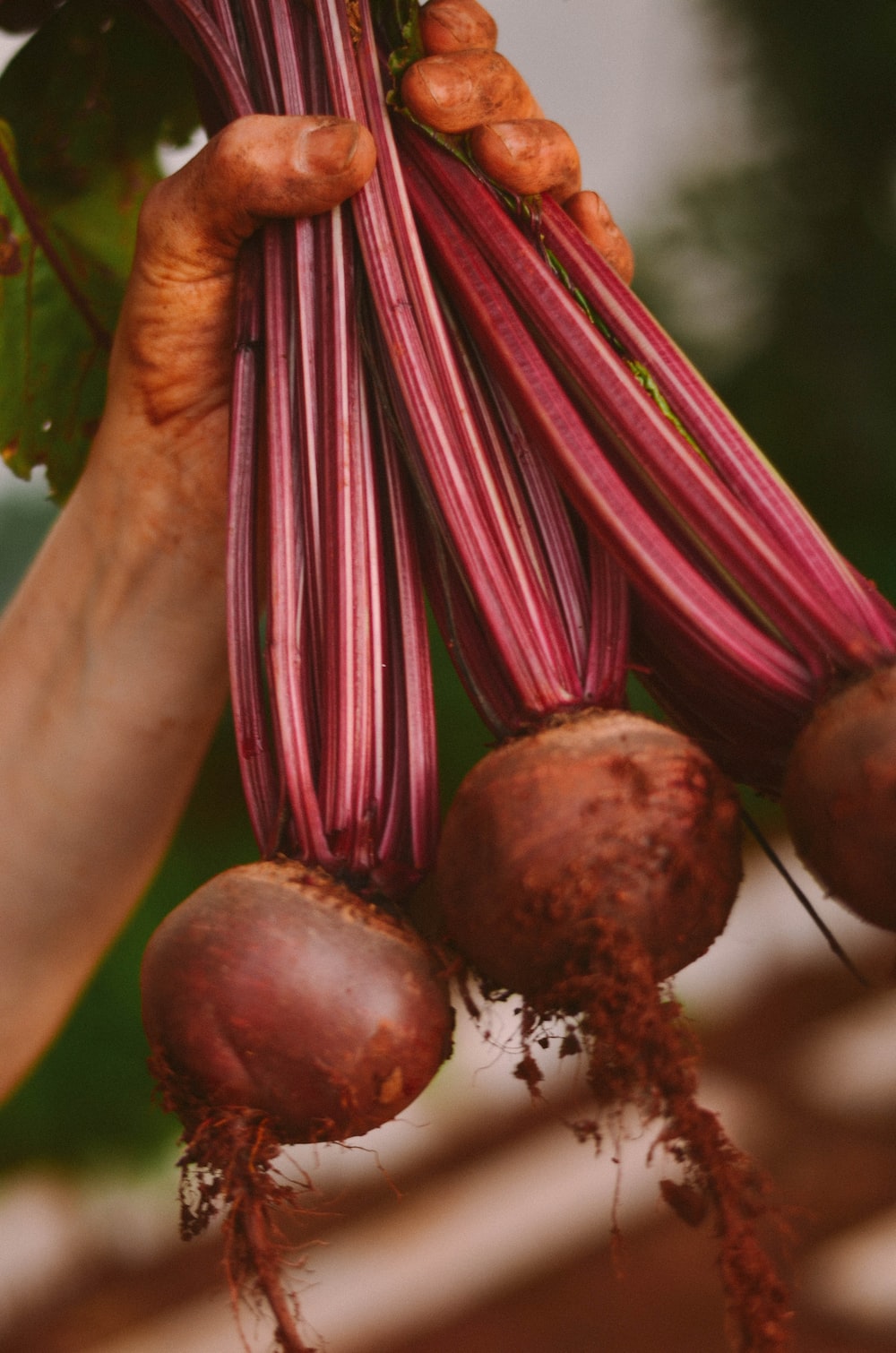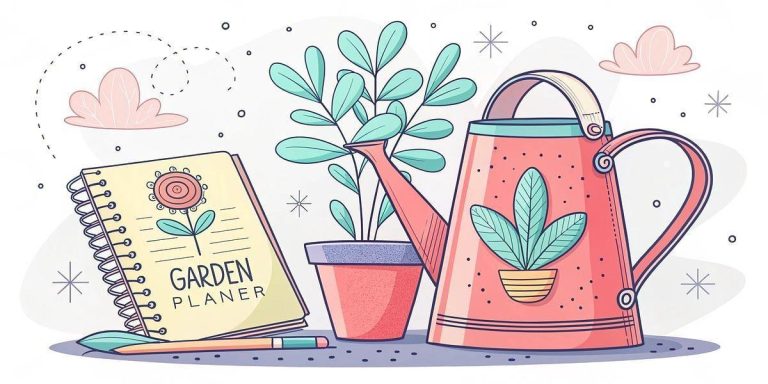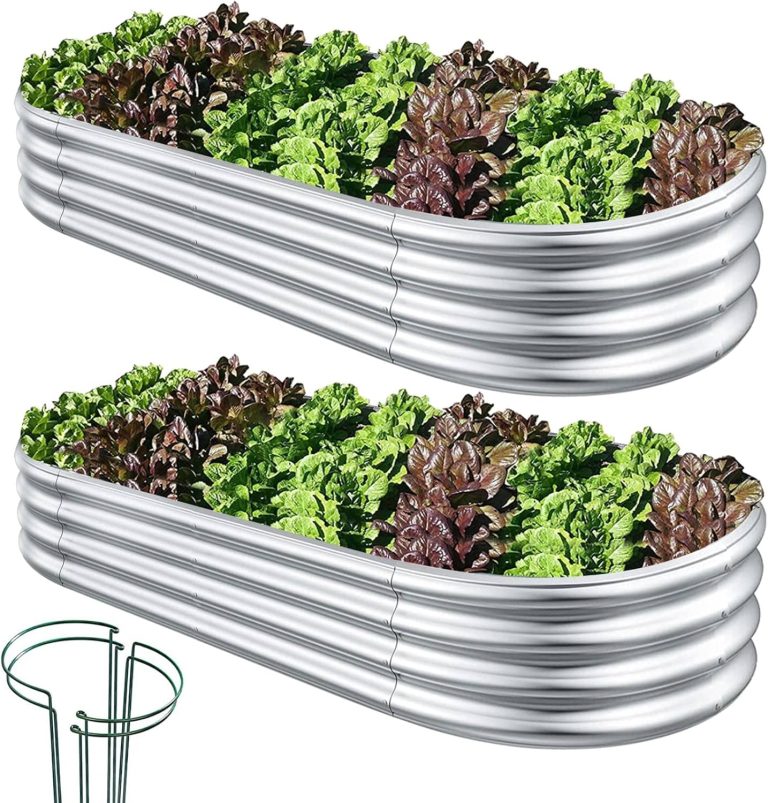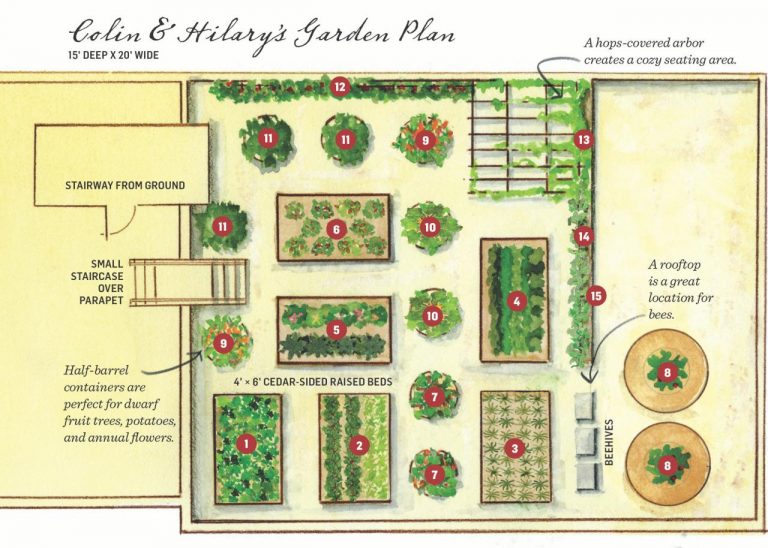How to Grow Beets Year-Round: Tips & Tricks
Are you looking for a nutritious and versatile crop to grow all year round?
Look no further than beets!
These root vegetables are easy to plant and maintain, making them perfect for any organic kitchen garden. With the right techniques and care, you can enjoy a steady supply of fresh beets, from beet seedlings to baby beets and even sugar beets.
You can also add radishes and salad greens to your garden for more variety. Simply sow seeds and watch them grow into delicious sprouts.
Not only are beetroots delicious roasted or pickled, but their greens and spinach make a tasty addition to salads or smoothies. And did you know that beet juice is packed with nutrients like iron and vitamin C? With so many uses, it’s no wonder that growing beets and radishes have become increasingly popular among home gardeners. Sprouts and bush beans can also be grown alongside these root vegetables.
In this guide, we’ll cover everything you need to know about planting and maintaining your own beet crop, including tips on indoor gardening with seedlings, transplanting, sprouts, and companion planting with other vegetables like beans and radishes.
You can also use beet sprouts as salad greens for a fresh and healthy meal addition. So let’s dive in and start your journey towards a bountiful harvest of fresh, organic beets!
- Beet Seeds for Planting – This planting packet includes 50 Ruby Queen Beet seeds (Beta vulgaris). The Ruby Queen beet is mild and sweet in flavor
- Non-GMO Heirloom Vegetable Seeds – All of Axel’s Garden Seeds are Heirloom & Non-GMO and are intended for the current and following growing seasons. Fresh garden seeds are always provided.
- Planting Packets with Instructions – Our colorful planting packets include all the necessary information to grow these vegetables successfully. Each packet is 3 in x 4.5 in with a beautiful full color illustration on the front with growing instructions on the back.
- Easy to Grow – Plant these seeds ½ inch deep in well-drained soil. Wait just 40-62 days for matured Ruby Queen Beets. If any problems occur, Axel’s Garden Seeds will provide whatever is necessary for your gardening needs.
- Variety of Seeds for Home Garden – Axel’s Garden Seeds offers unique fruit, flower, herb, and vegetable seeds. Each packet is hand packed with high-quality garden seeds.
Last update on 2025-11-15 / Affiliate links / Images from Amazon Product Advertising API
Choosing the Right Variety of Beet for Year-Round Cultivation
Different Varieties of Beets for Different Seasons
Beets, radishes, and spinach are versatile vegetables that can be grown year-round in many regions. However, not all beet varieties are suitable for year-round cultivation. Some beet cultivars are best suited for cool weather, while others thrive in warmer conditions.
Salad greens also make a great addition to any kitchen garden.
Before choosing a variety of beets to plant all year round, it’s essential to understand the different seasons and weather conditions in your region. This knowledge will help you select a variety of baby beets, sugar beets, or pickled beets that is most likely to grow well throughout the year.
Factors to Consider When Selecting a Variety
When selecting a variety of beets for year-round cultivation, there are several factors to consider, such as plant beets, sugar beets, baby beets, and pickled beets.
- Cold Tolerance: Beets are cold-tolerant vegetables that can withstand frost and mild freezes. However, some varieties are more cold-tolerant than others. If you live in an area with harsh winters, choose a variety with excellent cold tolerance.
- Disease Resistance: Beets can be susceptible to various diseases such as downy mildew and cercospora leaf spot. Choose a variety with high disease resistance to avoid problems later on.
- Days to Maturity: The time it takes for beets to mature varies by cultivar. Some varieties mature faster than others, making them ideal for growing during short growing seasons or if you want quick harvests.
- Best Flavor: Beet flavor varies depending on the cultivar and growing conditions. Some varieties have sweeter or earthier flavors than others.
Best Beet Varieties for Year-Round Cultivation
Here are some of the best beet varieties suitable for year-round cultivation, along with their delicious roots and leaves that can be used in various dishes.
Additionally, they pair well with radishes and other greens for a tasty and nutritious meal.
- Detroit Dark Red: This classic heirloom is one of the most popular beet varieties worldwide due to its sweet taste and deep red color. It has excellent cold tolerance and matures within 60 days.
- Bull’s Blood: This variety has a unique dark red foliage that is edible and adds color to salads. It matures within 55 days and has excellent cold tolerance.
- Chioggia: Also known as candy cane beets, this variety has eye-catching pink and white striped flesh. It matures within 60 days and has good disease resistance.
- Golden Beet: This variety has bright yellow flesh and a sweeter taste than other beet varieties. It matures within 55-60 days and has good disease resistance.
- Cylindra: This variety produces long cylindrical-shaped beets that are easy to slice for pickling or roasting. It matures within 60-70 days.
Preparing the Soil and Planting Beets: Step-by-Step Instructions
Growing beets and radishes all year round is possible with proper planning and preparation. One of the essential steps in growing these roots is preparing the soil for planting.
Here are some step-by-step instructions on how to successfully prepare your soil and plant beet and radish seeds.
Step 1: Choose a Well-Draining Soil with Plenty of Organic Matter
Beets and radishes prefer well-draining soil with plenty of organic matter, such as compost or manure. The ideal pH level for growing beets and radishes is between 6.0 and 7.5. Before planting, test the soil’s pH level using a home testing kit or by sending a sample to your local extension office. Both beets and radishes are root vegetables.
Step 2: Remove Weeds and Debris from the Soil
Before planting, clear the area of any weeds, rocks, or debris that may hinder plant growth. Weeds can compete with beets for nutrients, water, and sunlight.
Step 3: Loosen the Soil
Loosen the soil to a depth of at least six inches using a garden fork or tiller, which helps improve drainage and allows beet seedlings‘ roots to penetrate deeper into the soil. This process is also beneficial for growing healthy beet greens and producing nutrient-rich beet juice.
Step 4: Add Organic Amendments
Add organic amendments such as compost or aged manure to improve soil fertility and structure. Spread two to three inches of organic matter, including beet greens, over the topsoil before tilling it into the ground.
Step 5: Plant Beet Seeds
Sow beet seeds directly into prepared soil once all danger of frost has passed in spring or late summer for fall harvests.
Follow these simple steps:
- Make shallow furrows about half an inch deep in rows spaced twelve inches apart.
- Sow beet seeds thinly along each row, spacing them approximately one inch apart.
- Cover beet seeds lightly with loose soil.
- Water gently but thoroughly immediately after planting.
- Keep the soil moist but not waterlogged until the seeds germinate.
Step 6: Consider Square Foot Gardening
If you have limited space, consider square-foot gardening for growing beets all year round. This method involves dividing a raised bed into one-foot sections and planting a different crop in each section.
For beets, plant nine seeds per square foot and thin to four plants once they’ve sprouted.
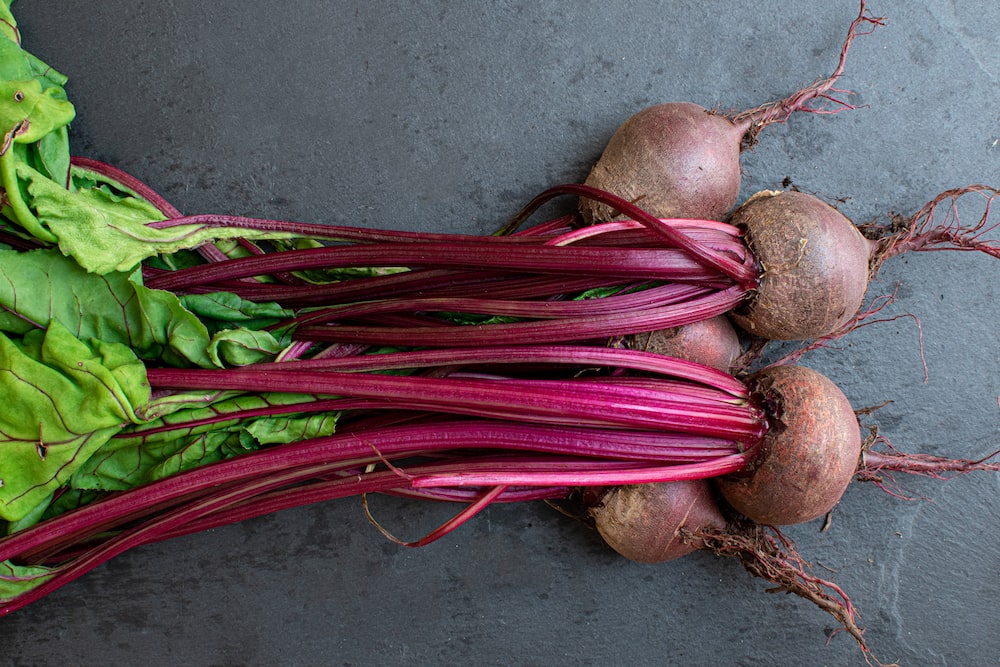
Watering, Fertilizing, and Managing Pests in a Beet Garden
Watering Beets
Beets require consistent moisture to grow well. However, they do not like to sit in waterlogged soil. Therefore, it is essential to ensure proper drainage in your garden bed.
Here are some tips for watering beets:
- Water deeply once or twice per week, depending on weather conditions.
- Avoid overhead watering as it can lead to leaf spot disease.
- Mulch around the plants to help retain moisture.
Fertilizing Beets
Beets are heavy feeders and require regular fertilization throughout their growing season. Before planting, work compost into the soil to provide nutrients.
Here are some additional tips for fertilizing beets:
- Side dress with compost or aged manure every few weeks during the growing season.
- Use a balanced fertilizer such as 10-10-10 or 5-10-5.
- Avoid over-fertilizing as it can lead to excessive foliage growth and reduced root development.
Managing Pests in a Beet Garden
Pests can be a significant problem in beet gardens.
Here are some natural pest control methods that you can use:
- Crop Rotation: Rotate your crops each year to prevent pests from becoming established in the soil.
- Companion Planting: Plant herbs such as basil, dill, and mint near your beet plants as they repel beetles and flea beetles.
- Handpicking Pests: Regularly inspect your plants for pests and remove them by hand.
- Spray with Neem Oil: Neem oil is an organic pesticide that can help control Japanese beetles and other pests.
- Use Row Covers: Cover your plants with row covers to prevent deer from eating them.
- Remove Weeds: Weeds attract pests, so keep your garden weeds-free.
Transplanting Beets
Beets do not transplant well, so it is best to plant them directly in the garden.
However, if you must transplant your beets, here are some tips:
- Transplant in the late afternoon or on a cloudy day to reduce plant stress.
- Water the plants thoroughly before and after transplanting.
- Space the plants 3-4 inches apart.
Dealing with Frost
Beets can withstand light frost, but hard frost can damage or kill them.
Here are some things you can do to protect your beets from frost:
- Cover your plants with row covers or blankets when frost is expected.
- Harvest your beets before a hard frost is expected.
- Vibrant Color Fusion: A stunning mix of rainbow beetroots, blending deep reds, golden yellows, and earthy whites for a visually striking dish or juice.
- Nutrient Powerhouse: Packed with antioxidants, folate, and potassium, offering a healthy boost with every sip or bite.
- Sweet & Earthy Flavor: Combines the natural sweetness of golden beets with the robust, earthy tones of red and white varieties.
- Versatile Use: Perfect for smoothies, salads, or roasted dishes, adding both flavor and a pop of color to your meals.
- Quality: All Beetroot seeds packaged by Seed Needs are intended for the current and the following growing seasons. All seeds are stored in a temperature controlled facility that is free of significant amounts of moisture.
Last update on 2025-11-15 / Affiliate links / Images from Amazon Product Advertising API
Harvesting and Storing Beets: Tips and Tricks for Maximum Yield
Harvesting beets is a rewarding experience, especially when you get to enjoy the fruits of your labor all year round. Whether you grow them in your backyard garden or in pots on your balcony, beets are relatively easy to grow and require minimal maintenance.
However, harvesting them at the right time and storing them properly can make all the difference in their flavor and texture.
When to Harvest Beets
Beets are ready for harvest when they reach their mature size, usually around 2 inches in diameter. However, some varieties may take longer to mature than others, so it’s best to check the seed packet or consult with a gardening expert for specific information.
When harvesting beets, it’s important to gently pull up each beet by its greens while being careful not to damage the roots. If you have trouble pulling them up, use a garden fork or trowel to loosen the soil around each beet before pulling it out.
Fall Harvest
If you want to extend your beet harvest into the fall months, plant a second crop about 8-10 weeks before your first expected frost date. This will give your beets enough time to mature before the cold weather sets in.
To ensure maximum yield during fall harvests, cover your plants with row covers or blankets at night when temperatures drop below freezing. This will protect them from frost damage and allow you to continue harvesting well into late autumn.
Storing Beets
After harvesting your beets, store them in a cool place with high humidity, such as a root cellar or refrigerator. This will help keep them fresh for several weeks or even months, depending on how well they’re stored.
If storing in a root cellar, make sure that it’s dark and well-ventilated with temperatures between 32-40°F (0-4°C) and humidity levels around 95%. You can also store beets in a refrigerator by placing them in perforated plastic bags or wrapping them in damp paper towels.
Succession Planting for Continuous Beet Harvests Year-Round
What is Succession Planting?
Succession planting involves planting new crops every few weeks to ensure a continuous supply of fresh produce throughout the growing season. This technique is especially helpful for crops like beets that have a relatively short harvest window.
By staggering your plantings, you can enjoy fresh beets all year round.
Plan Your Planting Schedule
To get started with succession planting, you need to plan your planting schedule based on the days to maturity of your chosen beet variety. Be sure to check the seed packet or ask your local nursery for this information. You’ll also want to consider the average spring frost date in your area so you can time your plantings accordingly.
For example, if you want to grow Avalanche beets, which have a 50-day maturity period, and your average spring frost date is April 15th, you’ll want to start planting seeds indoors around March 1st.
This will give you enough time to transplant them outside after the last frost and still have a good chance of harvesting before the first fall frost.
Plant New Beet Seeds Every 2-3 Weeks
Once you’ve determined when to start your first batch of seeds, plan on planting new beet seeds every 2-3 weeks for a steady supply of fresh beets. Be sure to label each row with the date it was planted so you can keep track of when each crop should be ready for harvest.
If space is limited in your garden, consider using row covers or other protective measures so that multiple crops can grow in one bed without competing for resources. You may also want to experiment with interplanting different varieties of beets or other compatible vegetables, such as carrots or radishes.
Tips for Success
Succession planting requires some planning and organization, but it’s worth it if you want fresh beets all year long!
Here are some additional tips to help you succeed:
- Keep your soil healthy and well-fed by adding compost or other organic matter before planting each new crop.
- Water regularly and deeply, especially during hot summer months.
- Mulch around your plants to conserve moisture and suppress weeds.
- Harvest beets when they’re young and tender for the best flavor. Don’t let them get too big or they’ll become tough and woody.
- Store harvested beets in a cool, dark place like a root cellar or refrigerator. They should last for several weeks.
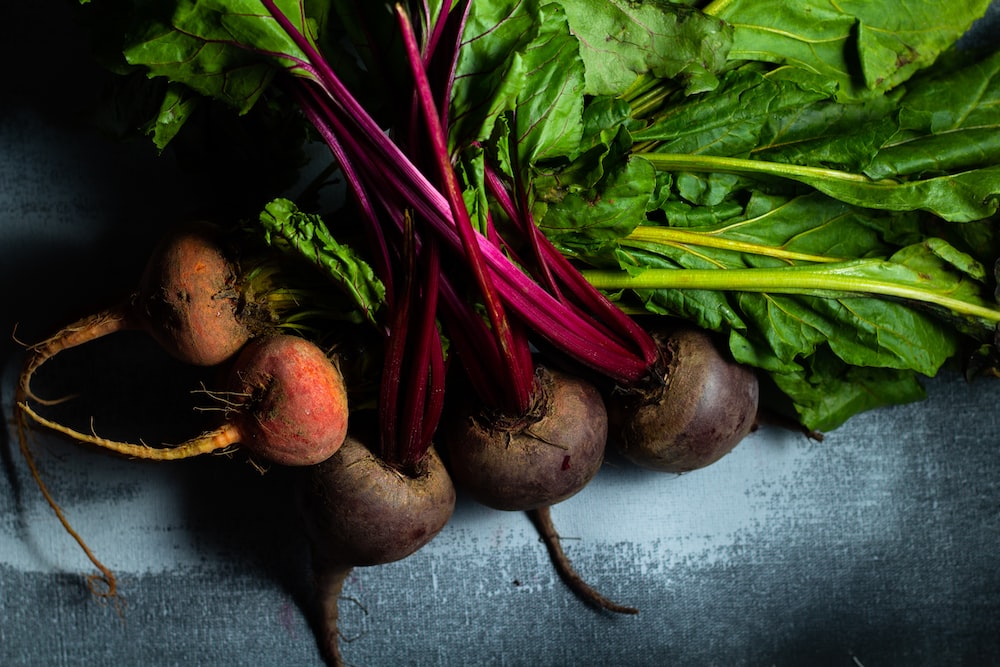
Companion Planting with Beets: Best Plants to Grow Together
Companion planting can be a great way to improve the health and yield of your crop. By planting certain plants alongside your beets, you can attract beneficial insects, fix nitrogen in the soil, and repel pests.
Beets Benefit from Companion Planting
Companion planting is a gardening technique where different plant species are grown together to benefit each other. By choosing the right companion plants, you can create a healthy ecosystem that helps your crops grow strong and healthy.
For beets, there are several benefits to companion planting. First, some plants can attract beneficial insects like ladybugs and lacewings that eat pest insects like aphids and spider mites.
Second, some plants can fix nitrogen in the soil which is essential for plant growth. Finally, some plants can repel pests like nematodes or flea beetles.
Last update on 2025-11-15 / Affiliate links / Images from Amazon Product Advertising API
Good Companion Plants for Beets
- Garlic – Garlic is an excellent companion plant for beets because it repels pests like aphids and spider mites. Garlic has natural fungicidal properties that help prevent diseases from affecting your beet crop.
- Onions are another great beet companion plant because they also repel pests like carrot flies and onion maggots. Onions have antibacterial properties that help keep soil-borne diseases at bay.
- Lettuce – Lettuce is an ideal companion plant because it attracts beneficial insects like ladybugs and lacewings that eat pest insects like aphids and spider mites.
- Radishes – Radishes are another good choice because they help break up compacted soil, making it easier for beet roots to grow deep into the soil. Radishes attract pollinators which can help increase your beet yield.
Plants to Avoid Planting Near Beets
While there are many plants that make good companion plants for beets, there are also some plants that should be avoided. For example, you should avoid planting beets near other root vegetables like carrots or parsnips because they compete for the same nutrients in the soil.
You should avoid planting beets near Brassica family plants like broccoli or cauliflower because they attract pests like cabbage worms and flea beetles.
Growing beets year-round is easy with these tips.
Growing beets all year can be a fun and rewarding experience. Following the right steps, you can enjoy fresh beets from your garden regardless of the season.
To start, choose the right variety of beet for year-round cultivation. Make sure to prepare your soil properly and follow our step-by-step instructions for planting. Watering, fertilizing, and managing pests are also important aspects to keep in mind when growing beets.
When it’s time to harvest, use our tips and tricks for maximum yield and proper storage. Succession planting is another great way to ensure continuous beet harvests throughout the year.
And don’t forget about companion planting! Certain plants grow well with beets and can help improve their growth.
Overall, growing beets all year requires some effort but is definitely achievable with the right knowledge and techniques.
So why not give it a try?
FAQs
1. Can I grow beets in containers?
Yes! Beets can thrive in containers as long as they have enough space to grow and receive proper care.
2. How often should I water my beet plants?
Beet plants need consistent moisture, so make sure to water them regularly – at least once a week or more frequently during hot weather.
3. What’s the best fertilizer for growing beets?
Beet plants benefit from balanced fertilizers that contain equal amounts of nitrogen, phosphorus, and potassium.
4. How do I know when my beets are ready to harvest?
You’ll know it’s time to harvest when the beet roots are around two inches in diameter or larger – usually around 60-70 days after planting.
5. Can I eat beet greens too?
Absolutely! Beet greens are nutritious and delicious – make sure to pick them before they become too tough or bitter.
6. Are beets difficult to grow?
Not at all! Beets are relatively easy to grow and require minimal maintenance as long as you follow the right steps.
7. What pests should I watch out for when growing beets?
Common beet pests include aphids, flea beetles, and leaf miners. Keep an eye out for any signs of damage and use organic pest control methods if needed.
Good luck and Happy Gardening!

